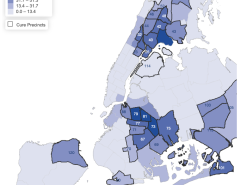SynthTect
Elevator Pitch: SynthTect is pioneering the future of cancer detection with AI by creating synthetic yet highly realistic tumor images to train smarter, more accurate AI models. With SynthTect, we’re not just imagining the future of medical AI; we’re building it, making early and accurate tumor detection accessible across the globe.
Concept
AI-driven platform for generating synthetic tumor images for improved medical AI training
Objective
To enhance the accuracy of AI models in detecting and segmenting tumors across various organs by providing a diverse set of synthetic tumor images for training.
Solution
Leverage generative AI models, specifically Diffusion Models, to produce high-quality, generalizable synthetic tumor images that can be used to train AI models for better tumor detection and segmentation.
Revenue Model
Subscription-based access for healthcare institutions and research organizations; Licensing of the technology to AI healthcare startups.
Target Market
Healthcare institutions, medical imaging companies, AI healthcare startups, and research organizations focused on cancer diagnosis and treatment.
Expansion Plan
Initially focus on creating synthetic tumors for major organs (liver, pancreas, kidneys) and later expand to more types of cancer and organs. Develop partnerships with healthcare facilities and AI research groups globally.
Potential Challenges
Ensuring the synthetic tumors are sufficiently realistic and varied to effectively train AI models; Keeping up with advancements in medical imaging technology.
Customer Problem
The lack of diverse and extensive datasets of tumor images limits the effectiveness of AI in accurately diagnosing tumors across different organs and patients.
Regulatory and Ethical Issues
Complying with healthcare data regulations and ensuring ethical use of synthetic data in medical diagnosis.
Disruptiveness
By significantly improving the dataset quality for AI training, SynthTect has the potential to revolutionize tumor detection and segmentation, making it faster, more accurate, and adaptable across different organs and medical imaging technologies.
Check out our related research summary: here.




Leave a Reply